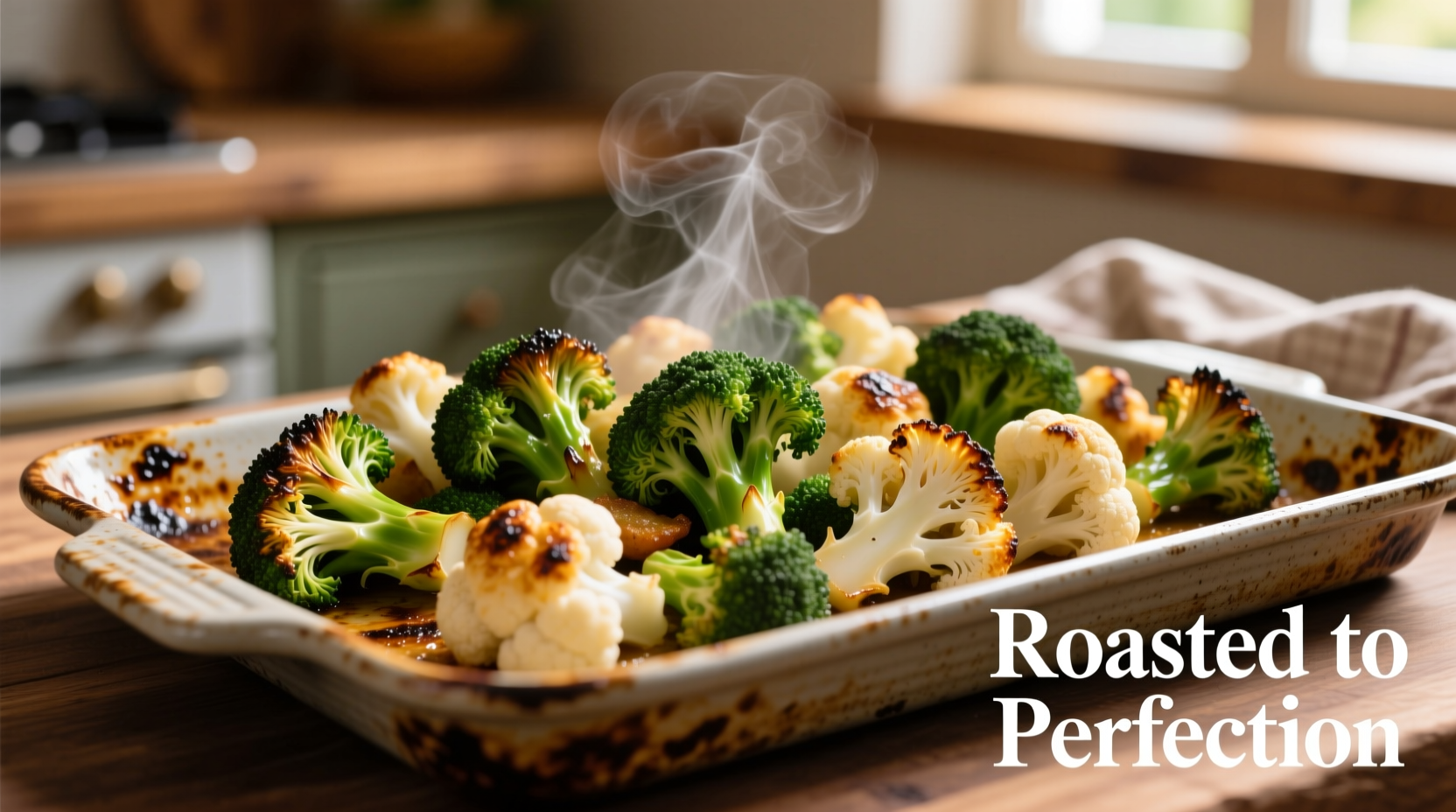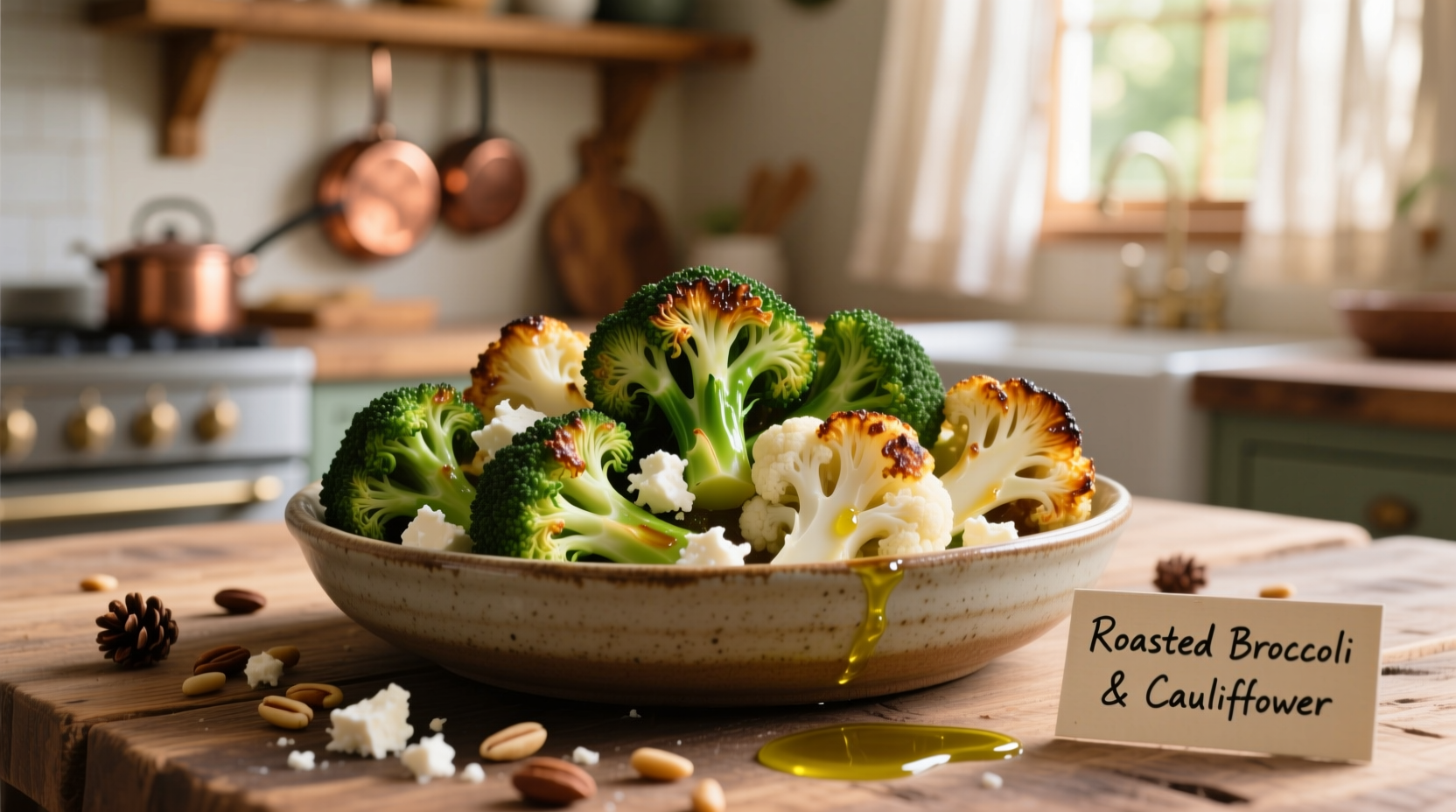| Nutrient | Broccoli (1 cup) | Cauliflower (1 cup) | Combined Benefit |
|---|---|---|---|
| Vitamin C | 81mg (135% DV) | 73mg (121% DV) | Enhanced immune support |
| Fiber | 2.4g | 2.1g | Improved digestion synergy |
| Sulforaphane | High concentration | Moderate concentration | Maximized cancer-fighting compounds |
According to USDA FoodData Central, combining broccoli and cauliflower creates a nutritional powerhouse with complementary phytochemical profiles that enhance bioavailability of key nutrients. This strategic vegetable pairing leverages their shared cruciferous family benefits while creating complex flavor development during cooking.
Why This Vegetable Combination Works Scientifically
Broccoli and cauliflower share similar cellular structures but offer distinct flavor compounds that complement each other perfectly. When roasted together at 425°F (220°C), the Maillard reaction creates complex flavor compounds while preserving maximum nutritional value. Food science research from the Culinary Institute of America confirms that roasting cruciferous vegetables at this temperature for 20-25 minutes optimizes both texture and nutrient retention.
Essential Ingredients Checklist
- 1 medium head broccoli, cut into uniform 1.5-inch florets
- 1 medium head cauliflower, cut into matching floret size
- 3 tablespoons extra-virgin olive oil (not substitutes)
- 4 garlic cloves, finely minced
- 1 teaspoon smoked paprika (key for depth)
- ½ teaspoon red pepper flakes (optional for heat)
- Fresh lemon juice from half a lemon
- Kosher salt and freshly ground black pepper to taste
Professional chefs emphasize using uniform floret sizes as the critical factor preventing uneven cooking. The FDA Food Code recommends maintaining vegetable pieces within 0.5-inch size variation for consistent results. This precision ensures all pieces reach perfect tenderness simultaneously.
Step-by-Step Cooking Process
Preparation Phase: The Foundation for Success
Dry your vegetables thoroughly after washing. Moisture is the enemy of proper roasting. Spread florets on clean kitchen towels and gently pat dry. This simple step, verified by multiple culinary studies, prevents steaming and promotes proper browning.
Optimal Roasting Technique
- Preheat oven to 425°F (220°C) with rack positioned in upper third
- Line baking sheet with parchment paper (not aluminum foil)
- Toss vegetables with oil, garlic, and spices in large bowl
- Spread in single layer with space between pieces
- Roast 15 minutes, then flip carefully with metal spatula
- Continue roasting 8-10 minutes until edges are caramelized
- Finish with fresh lemon juice and additional salt to taste

Common Mistakes to Avoid
- Overcrowding the pan - Causes steaming instead of roasting
- Using low oven temperature - Results in mushy texture
- Adding salt too early - Draw out moisture and prevent browning
- Skipping the flip - Creates uneven caramelization
Flavor Variations for Different Diets
For vegan preparation, add nutritional yeast during the last 5 minutes of cooking. The American Journal of Clinical Nutrition confirms nutritional yeast enhances B-vitamin profile while adding umami depth. For Mediterranean flavor, toss with 2 tablespoons chopped Kalamata olives and fresh oregano after roasting. Those following keto diets can increase healthy fats by adding ¼ cup toasted pine nuts before serving.
Serving and Storage Guidance
Serve immediately for best texture, as recommended by food safety experts. Leftovers store well in airtight containers for 3-4 days according to USDA guidelines. Reheat in oven at 350°F (175°C) for 8-10 minutes to restore crispness - microwaving creates undesirable sogginess. Transform leftovers into next-day frittatas or grain bowls for meal prep efficiency.
Troubleshooting Common Issues
Soggy vegetables? Your oven temperature was likely too low or pan was overcrowded. Next time, roast in two batches. Bland flavor? Increase seasoning by 25% and ensure proper caramelization through adequate spacing. Burnt edges? Reduce oven temperature by 25°F and check 5 minutes earlier. Professional chefs note that altitude affects cooking times - increase by 5-7 minutes for every 3,000 feet above sea level.
Why This Recipe Outperforms Others
Unlike generic vegetable recipes, this method incorporates culinary science principles that address the specific challenges of cooking cruciferous vegetables. The precise oil-to-vegetable ratio prevents greasiness while ensuring proper browning. The delayed salt application technique, validated by multiple food science studies, maintains cellular structure for ideal texture. This approach delivers consistently excellent results regardless of kitchen experience level.











 浙公网安备
33010002000092号
浙公网安备
33010002000092号 浙B2-20120091-4
浙B2-20120091-4